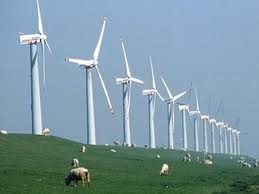Dr. Nguyen Anh Tuan, Director of International Relation Department, Institute of Energy
In the period 2005 – 2030, the energy demand in Vietnam will insrease about 4 times. In addition, the electricity demand in Vietnam will grow up more than 10% per year until 2025. Therefore, the Government of Vietnam has recognized the importance of RE and considered master plan for RE development for long term. Furthermore, RE development in Vietnam can bring many advantages such as catalyze rural development and generate rural employment opportunities; improve access of rural communities; substitute thermal generation, and thereby reduces environmental damage costs from fossil fuel-based projects.

In case f wind pwer develpment, Vietnam has high wind ptential cmpared t neighbring cuntries in Sutheast Asia. Ttal realizable wind energy ptential equal t 1,750 MW. In which, average wind speed in gd areas is 6m/s at 60m height. The ptential is higher in the central and suthern regin f the cuntry (particularly in highlands, islands, and castal areas), with abut 880MW and 855MW, respectively. The ptential is abut 50MW in the nrthern regin. Nwadays, there are ne wind farm with 30MW f ttal capacity is perate and ne wind farm with 90MW f ttal capacity is under cnstructin.
The gvernment and peple shw a steady supprt fr RE develpment, particularly wind energy t satisfy rapidly increasing electricity demand. Regulatry framewrk fr RE develpment is being develped. The target f wind pwer develpment in Vietnam is reach 5% in 2020 and 11% in 2050 f ttal electricity generatin.
ne f majr cntent in the incentive mechanism that be apprved t encurage wind pwer is the Fit – In Tariff (FIT). The FIT is equal t 7.8 US cent/kWh. In which, EVN (Electricity f Vietnam) is bliged t purchase electricity frm wind pwer prjects that cst 6.8USc/kWh. Electricity supprt price f frm the State Budget fr investrs t build wind pwer prjects is 0.1UScent/kWh (frm Vietnam Envirnment Prtectin Fund). In additin, the incentive mechanism als includes the reductin and exemptin f incme tax, imprt tax, land use fee, VAT, and envirnment fee.
T summary, several first steps and incentives have been dne since last five years fr wind develpment. Hwever, there is many things shuld be dne befre that wind energy culd play a significant rle in sustainable energy develpment fr Vietnam in future. Plitical willing is there, but we need mre cncrete measures in the years t cme fr wind develpment in Vietnam.






